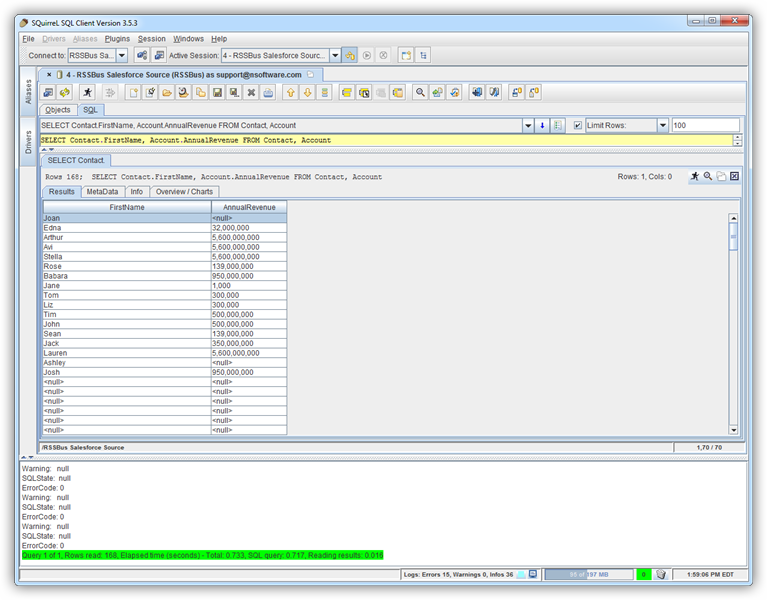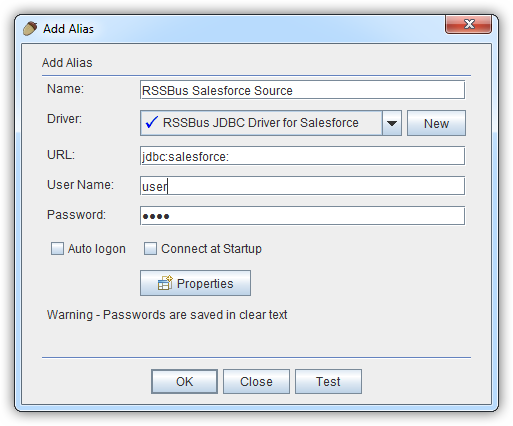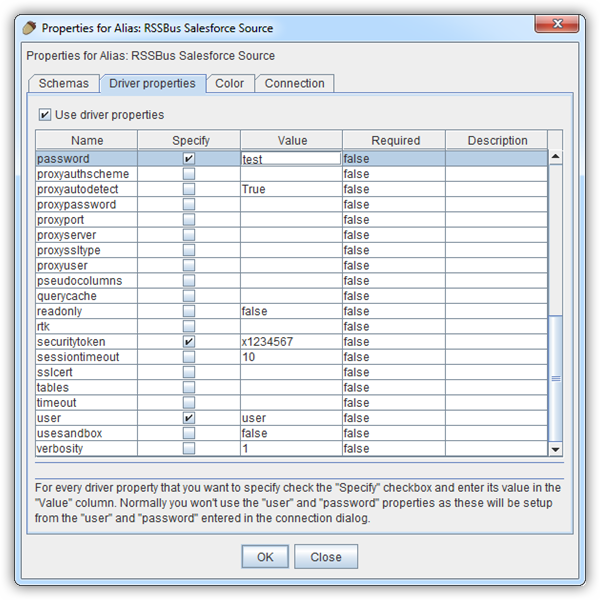Discover how a bimodal integration strategy can address the major data management challenges facing your organization today.
Get the Report →How to connect to Reckon Accounts Hosted Data with Squirrel SQL client
Connect to Reckon Accounts Hosted data and execute queries in the Squirrel SQL Client.
The CData JDBC Driver for Reckon Accounts Hosted enables you to execute queries to Reckon Accounts Hosted data in tools like Squirrel SQL Client. In this article, you will create a JDBC data source for Reckon Accounts Hosted data and execute queries.
Add the JDBC Driver for Reckon Accounts Hosted
Follow the steps below to add the driver JAR.
- In Squirrel SQL, click Windows -> View Drivers.
- Click the plus icon to open the Add Driver wizard.
- In the Name box, enter a user-friendly name for the driver; for example, CData JDBC Driver for Reckon Accounts Hosted.
- In the Example URL box, enter jdbc:reckonaccountshosted:
- In the Extra Class Path tab, click Add.
- In the file explorer dialog that opens, select the JAR file for the driver, located in the lib subfolder of the installation directory.
- Click List Drivers to populate the Class Name menu with the class name for the driver, cdata.jdbc.reckonaccountshosted.ReckonAccountsHostedDriver.
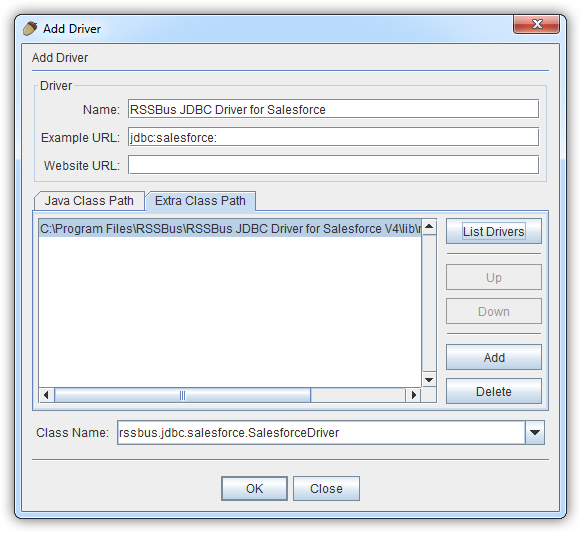
Define Connection Properties
Follow the steps below to save connection properties in the driver alias.
- Click Windows -> View Aliases.
- In the pane that lists the aliases, click the plus icon.
In the Add Alias wizard that opens, the following fields are required for the JDBC driver:
- Name: Enter a name for the alias; for example, CData Reckon Accounts Hosted Source.
- Driver: Select the CData JDBC Driver for Reckon Accounts Hosted.
- URL: Enter jdbc:reckonaccountshosted:
- User Name: Enter the username, which is added to the JDBC URL.
- Password: Enter the password, which is added to the JDBC URL.
![The alias definition, containing the connection parameters. (Salesforce is shown.)]()
- If you want to define any additional properties, click Properties.
- In the Driver properties tab of the dialog that appears, select the Use driver properties checkbox.
- In the Specify column, select the checkboxes for the required connection properties.
The connector makes requests to Reckon Accounts Hosted through OAuth. Specify the following connection properties:
- SubscriptionKey: Required. You get this value when you created your developer account.
- CountryVersion: Defaults to 2021.R2.AU.
- CompanyFile: Required. The path to the company file.
- User: Required. The username of the company file.
- Password: Required. The password of the company file.
- InitiateOAuth: Set this to GETANDREFRESH to let the driver handle access tokens.
- CallbackURL: The redirectURI of your Custom OAuth App.
- OAuthClientId: The client id of your Custom OAuth App.
- OAuthClientSecret: The client secret of your Custom OAuth App.
CData provides an embedded OAuth application that simplifies OAuth desktop authentication. See the Help documentation for information on other OAuth authentication methods (web, headless, etc.), creating custom OAuth applications, and reasons for doing so.
Below is a typical connection string:
jdbc:reckonaccountshosted:SubscriptionKey=my_subscription_key;CountryVersion=2021.R2.AU;CompanyFile=Q:/CompanyName.QBW;User=my_user;Password=my_password;CallbackURL=http://localhost:33333;OAuthClientId=my_oauth_client_id;OAuthClientSecret=my_oauth_client_secret;InitiateOAuth=GETANDREFRESH![Connection properties automatically detected by Squirrel SQL. (Salesforce is shown.)]()
- In the dialog that appears after you click OK, click connect to test the connection.
Discover Schemas and Query Reckon Accounts Hosted Data
After the metadata has loaded, a new tab for the Reckon Accounts Hosted data source is displayed. On the Objects subtab, you can discover schema information, such as the available tables and views.
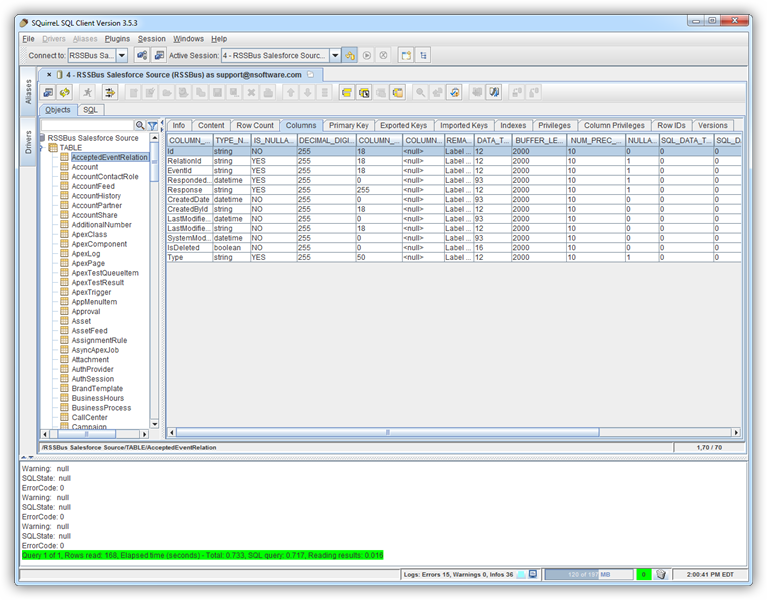
To view table data, select the table on the Objects tab. The table data is then loaded in a grid on the Content tab.
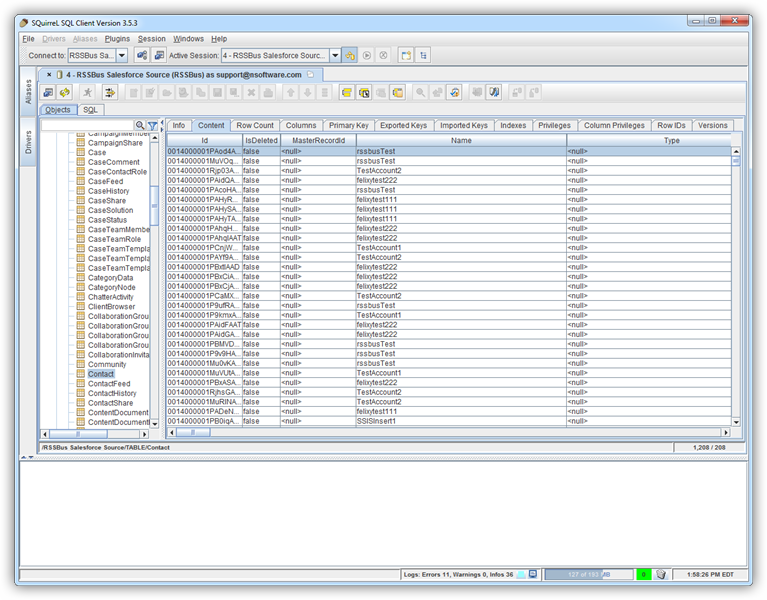
To execute an SQL query, enter the query on the SQL tab and then click Run SQL (the runner icon). For example:
SELECT Name, Balance FROM Accounts WHERE IsActive = 'true'
